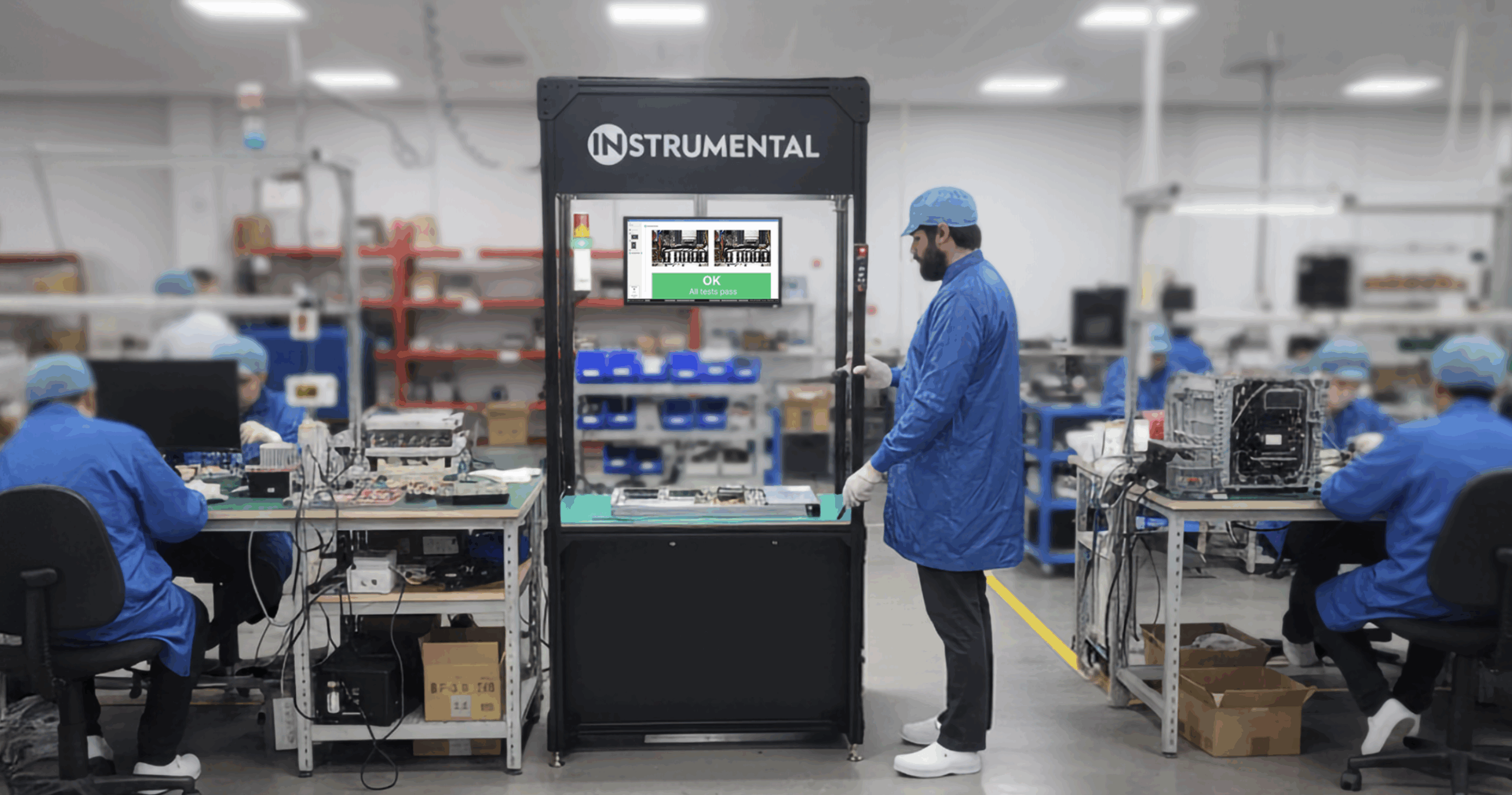Recently we announced Instrumental Measure, the first tool that enables hardware engineers to measure almost any dimension from any stage of assembly of any unit, at any time, without physical access to the unit or factory. This is possible because of Instrumental equipment that takes high-resolution images on the manufacturing lines. Those images are processed to compensate for optical artifacts, and then measurements can be taken directly on the images. The remote, retroactive nature of Instrumental Measure unlocks new use cases for measurement that were not previously possible. Below, we’ll cover some common issues that many hardware engineering teams encounter, and compare how those issues would be solved with and without Instrumental Measure.
You get a report from the factory that some units from your build failed a reliability test.
Oh no! There are lots of reasons why that could happen. To investigate, if you don’t happen to be in the factory already, you would either have to fly there or ask a teammate to do some failure analysis. Then you’d need to build more failing units, and potentially even stand on the line watching to see if it’s possible to catch something going wrong. You might request that those new units be routed through a digital microscope where an operator would collect measurements into an Excel spreadsheet for you, but you’d have to guess which measurements were important. In any case, particularly troublesome failures can take a week or more and many unplanned units to diagnose.
With Instrumental, you just log on, search for the serial numbers of units that failed, and zoom in on images of those units taken during assembly to find problematic areas. You can measure anything you need in a few clicks, and remotely identify changes that need to be made.

It’s right before launch and some of the first production units arrive at HQ. Oh no, some buttons feel mushy!
You suspect it’s due to misaligned switches, but you have no data. What do you do?
Traditionally, you’d likely take apart a bunch of units and measure the switches manually. With Instrumental, you can just go search for units built within a certain time frame and, with a few clicks, virtually open those units and measure the critical distances that affect button feel.

You release a product, and then you get a report from the field that something went wrong.
What do you do?
Let’s say that the failure mode suggests an environmental seal is compromised. This is traditionally a hard problem to diagnose because disassembling units can damage the evidence of what caused the problem. Still, to find the root cause, you’d probably try to get physical access to the unit and carefully disassemble it. Perhaps you have a theory that the seal wasn’t compressed enough by the bracket responsible for keeping the seal, in which case you might use hand tools or an OMM to measure that bracket’s positioning in the unit.
With Instrumental, you just search for the affected serial number and zoom in on images of the unit taken during its assembly. It only takes a few clicks to measure the bracket to gather evidence for your theory about it failing to adequately compress the seal. If you did happen to find something, you could quickly compare against other units built around the same time to see if they were affected. If they have the same problem, you can mount a proactive recovery plan – all within minutes of first hearing about the issue.
You’re in DVT and realize a new part is needed, but the fit is unclear—are the surrounding parts even in spec yet?
For example, let’s say you determine that you need to add an electromagnetic shield can around a radio chipset because the noise is affecting the product’s performance. Unfortunately, there are several other parts really close to where the can needs to go – and while the CAD model can provide some insight, perhaps you aren’t sure that the surrounding parts are truly in spec or being placed exactly as in the CAD. If they’re not, they won’t leave enough room. Now what?
If you’re lucky, maybe you have enough recently built units available on hand that you can tear down and measure manually to inform your guess. Otherwise, you could wait for units to get built and/or shipped to you from the factory, or you could redesign the surrounding parts to accommodate the can. In each case, it might mean re-routing your PCB and your radio chipset, introducing multiple days of delay.
With Instrumental, you can go online and measure units produced recently to see how much space there actually is, so that you can design your new part to accommodate what you are building today – all in minutes.
Major scratches start showing up on the company logo
You probably don’t have enough units on hand to know how often this happens or what the distribution of scratch sizes is. In the past, you might set up new inspection criteria at key places on the assembly line to try to pinpoint where the scratches are happening, and how frequently. Hopefully, this would give you enough information to change the assembly process, standard operating procedure, or fixturing to avoid the issue.
With Instrumental, you can go back and look at images of existing units to determine when the scratches started happening and at what step in the assembly process. You can also remotely and retroactively measure how big the scratches are, note where on the unit they are appearing, and adjust processes accordingly.
Do these problems sound familiar? See how Instrumental can streamline your issue discovery and failure analysis process by requesting a demo today.
Related Topics



